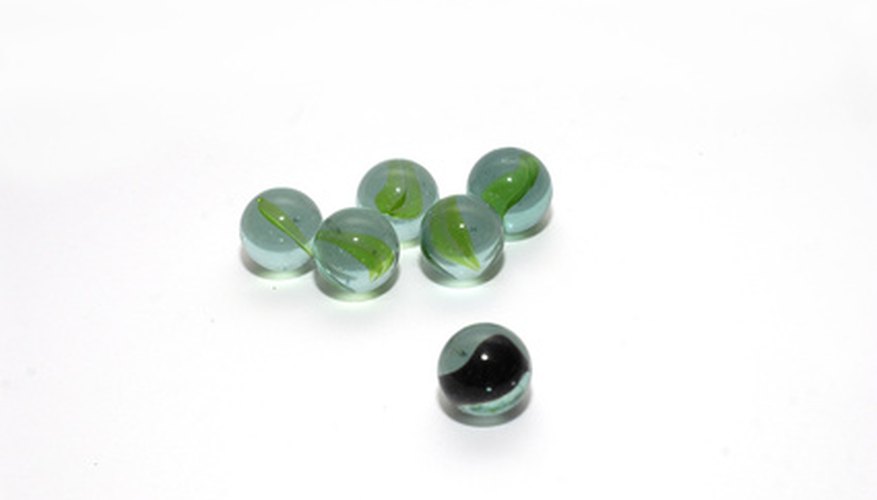All handmade glass marbles have at least one pontil mark on them. This mark shows where the creator broke the marble off the rod during its creation. Some creators leave the pontil as it is, while others attempt to grind or melt it down to hide its appearance. Knowing the characteristics of the different pontil marks allows you to identify which type of marble you have and tell handmade marbles from those made with a machine.
- All handmade glass marbles have at least one pontil mark on them.
- Knowing the characteristics of the different pontil marks allows you to identify which type of marble you have and tell handmade marbles from those made with a machine.
Feel along the marble until you locate a rough spot. This spot marks the bottom of the marble and shows where the creator broke the marble from the rod after creation was complete. Determine how rough the area feels, and examine it to see what types of marks appear and what they look like. If the marble is completely smooth, it was machine made and has no pontil marks.
Check for smooth lines or a single straight line that runs deep into the marble. Lines like this as well as smooth indents or bubbles do not indicate pontil marks found on handmade marbles. They are shear lines caused by machines and are not true pontil marks.
Examine the pontil marks that appear to be real. These lines are typically rough and extend out in a ripple-like pattern. Shear lines may appear rough depending on the machine that created them, but they will run along the marble in thin lines that look like cracks in glass. Pontil marks are rounder and do not follow a pattern.
- Check for smooth lines or a single straight line that runs deep into the marble.
- Shear lines may appear rough depending on the machine that created them, but they will run along the marble in thin lines that look like cracks in glass.
Feel the pontil mark, and determine how rough it is. Round pontil marks with a slightly rough texture that are still fairly smooth indicate what is known as a ground pontil mark, according to Akron Marbles. After the marble was made, the creator ground the pontil mark down to create the slightly rough yet flat mark on the bottom.
Smoother textured but bumpier and more obvious marks are regular pontil marks. These occurred when the creator simply broke the marble off after creation and did not grind or smooth out the mark. Extremely smooth marks may indicate a melted pontil where the area was melted after creation to hide the original pontil mark.
- Feel the pontil mark, and determine how rough it is.
- Extremely smooth marks may indicate a melted pontil where the area was melted after creation to hide the original pontil mark.
Examine the pontil mark under a microscope if possible. This will allow you to better see how rough the texture is and see if the mark appears to be on the surface, which is characteristic of handmade marbles, or deeper down, which may indicate a machine-made marble. Akron Marbles recommends examining the marbles on a microscope at 60 power.
